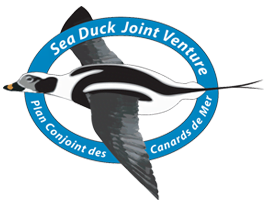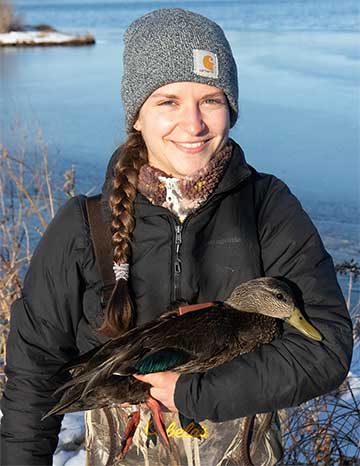
Tori holding an American Black Duck, captured as part of her research. Photo: Peter Paton
Tori Mezebish Quinn is a Ph.D. candidate at the University of Rhode Island, where she studies waterfowl in partnership with the Rhode Island Department of Environmental Management. An SDJV Student Fellowship Awardee, Tori is studying how environmental and anthropogenic factors affect sea ducks and diving ducks in southern New England. Her research aims to address two main objectives: to identify important areas for wintering waterfowl and the variables impacting the selection of those sites and to characterize annual migration patterns of study species. One of the variables hypothesized to have an impact on waterfowl distribution is the presence of shellfish aquaculture. The shellfish industry is rapidly growing in Rhode Island, but no research has assessed the impact of these operations on the habitat selection of wintering sea ducks at a species-specific level or in relation to other environmental and anthropogenic factors.
Between 2020 and 2023, she deployed GPS transmitters on five species: Atlantic Brant, American Black Duck, Common Goldeneye, Red-breasted Merganser, and Greater Scaup. These trackers will collect one location in a given period, depending on the specific transmitter model and the location of birds across the annual cycle, for approximately 1 year or longer, and will improve our understanding of the movement patterns of these species. While this research is ongoing, early data shows that Atlantic Brant prefer shallow, nearshore habitats and are more likely to use open estuarine water than estuarine wetlands and that both habitats are preferred over grass. On the contrary, Black Ducks were more likely to use wetland habitats than both open water and grass and were overall associated with inland riverine habitats isolated from human development. Additional analyses will assess the relationship of Greater Scaup preferred habitats with aquaculture and other human development.
The analysis of annual cycle movements is not yet complete, but once compiled, will provide an in-depth look at species’ spring migration routes from the Eastern to Western Arctic. Tori will also use this tracking data to characterize the timing and location of important sites during the annual cycle, such as breeding and molting areas.
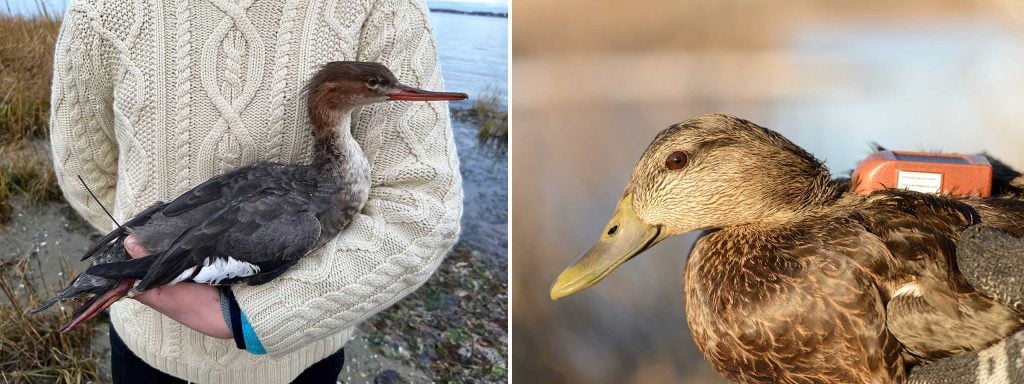
Common Merganser (left) and American Black Duck (right) with GPS transmitters. Photo: Megan Gray
Together, this study provides insight into sea ducks and sympatric species that can be difficult to locate given their migration cycles and remote breeding locations. Understanding how activities such as shellfish aquaculture and commercial activities impact habitat choice is particularly important for conservation managers as urban development continues. Further, in-depth knowledge of the timing of annual cycles and sites most important to these species allows conservationists and managers to better protect bird species in the long term.
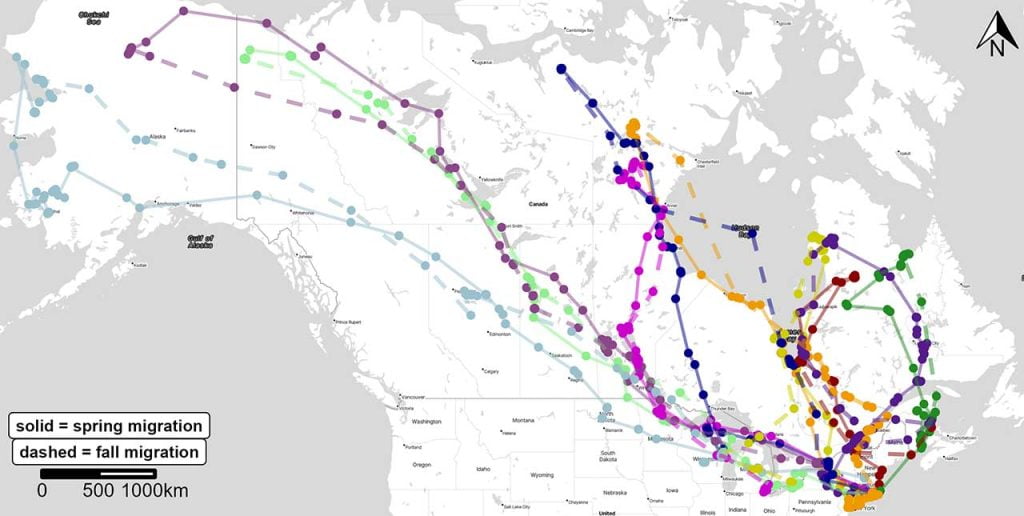
Preliminary data of full spring and fall 2023 migration data for 10 greater scaup, provided by Tori.
Follow along to learn more about Tori’s research!
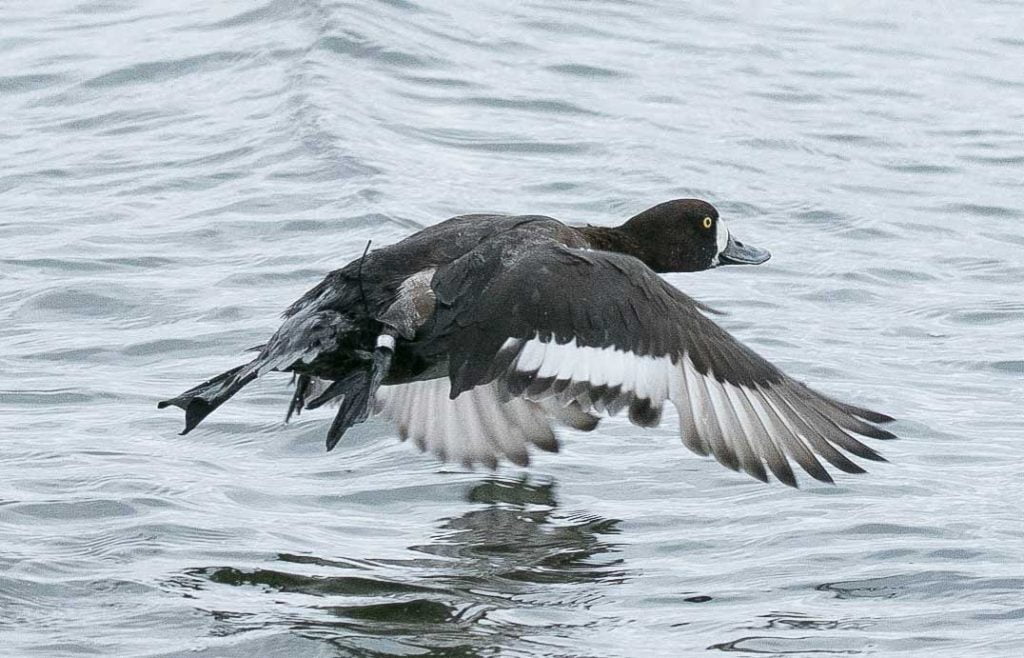
Greater Scaup release after GPS transmitter attachment. Photo: Peter Paton
